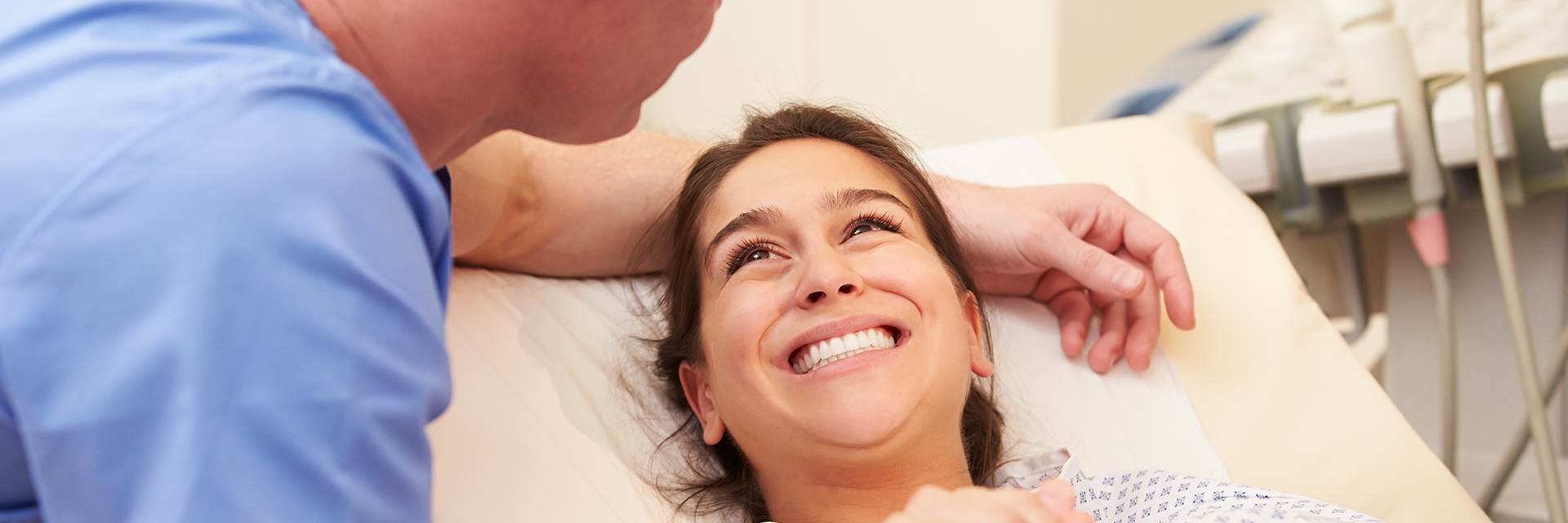Labor occurs in 3 stages and includes childbirth and the delivery of the placenta. Here’s a look at what to expect at each stage:
STAGE 1
The first stage of labor involves 3 phases:
- Early labor – This can last 8 to 12 hours, typically with mild, irregular contractions. Try to relax, stay hydrated and eat small snacks. Light, simple routines around the house are OK. Keep track of your contractions (or have your partner do this). They’ll start to be more noticeable, lasting 30–45 seconds and occurring anywhere from 5 to 30 minutes apart. The contractions will become stronger and more regular as labor progresses.
- Active labor – Head to your hospital or birthing center once your contractions are strong and consistently 5 or fewer minutes apart. A good rule of thumb is “5-1-1”—head to the hospitalwhen contractions are 5 minutes apart, last 1 minute each and this has been going on consistently for at least 1 hour.
Active labor contractions become quite intense. Your partner can help by staying by your side, speaking soothingly, massaging your abdomen or lower back, reminding you to change positions frequently and providing distractions such as soft music or reading from a book, if you’d like.
- Transition – This challenging phase is also the shortest. Contractions will be very strong and very close together. You will start to feel an overwhelming urge to push; tell your doctor or midwife when this happens and he or she, along with the nursing staff, will help guide you through pushing.
Contractions can be painful and overwhelming. Options for alleviating labor pain.
STAGE 2
During this stage, you’ll be pushing hard to help in the delivery of your baby. This period can last anywhere from 20 minutes to about 2 hours. You’ll feel a strong urge to push and pressure at the rectum.
Once your baby’s head crowns, you’ll be told to stop pushing to avoid tearing. An initial stinging or burning sensation will turn to numbness as the baby’s head stretches the vaginal walls enough to block the nerves there.
Your doctor or midwife will help guide the baby out and into the world.
STAGE 3
This last stage involves delivery of your placenta. It can take between 5 and 30 minutes. Your healthcare provider will watch for small contractions indicating the placenta is separating from the uterine wall and about to be delivered.
The provider may put a little pressure on your abdomen or gently tug the umbilical cord still attached to the placenta to help move things along. Once the placenta is delivered, your body may start to shake signficiantly; this is normal and will subside.
Immediately or very shortly after birth, your newborn will be placed skin-to-skin on your bare chest, a practice that promotes bonding, calming of both Mom and baby and the initiation of breastfeeding.
Congratulations! You and your partner are parents! Relax and spend some quiet time holding and getting to know your baby.
This message is not intended to provide individual medical advice. Always seek the advice of a physician or qualified healthcare provider for any questions you have about your health or medical condition, your breastfeeding issues and your infant's health. Never disregard, avoid or delay contacting a doctor or other qualified professional because of something you have read in our emails, webpages or other electronic communications.
Powered by UbiCare

